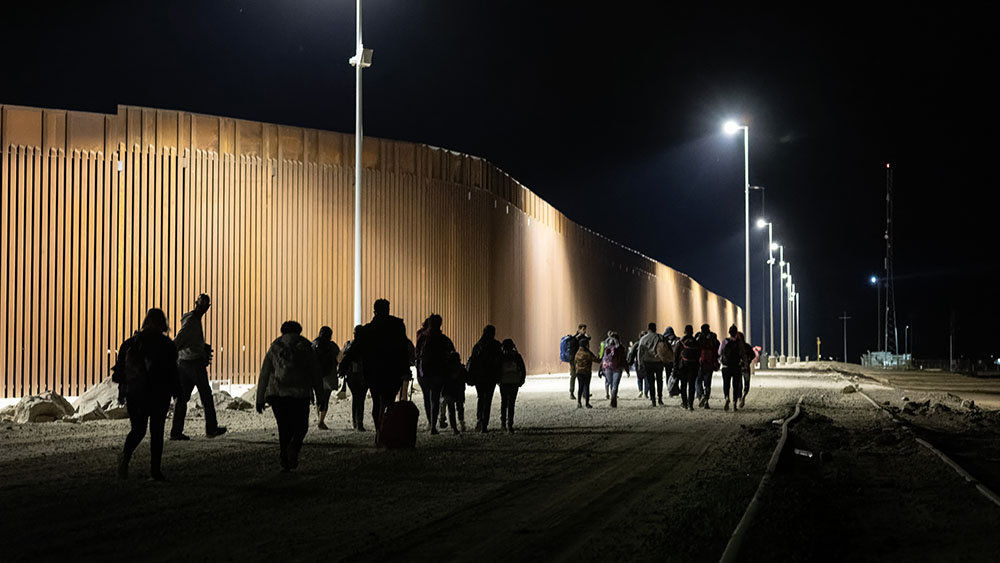
The joint report warned that the current state of global food insecurity is worse than the conditions that preceded the Arab Spring uprisings and revolutions across the Middle East and North Africa in late 2010. (Related: WFP executive director: We have no choice but to take food from the hungry to feed the starving.)
Last year, Ethiopia, Nigeria, South Sudan and Yemen had the worst levels of food insecurity in the world according to the previous joint report. Now, Afghanistan and Somalia have been added to the list.
People in the Democratic Republic of the Congo, Haiti, Kenya Sudan, Syria and in countries in the Sahel region of Africa are at "very high concern" of experiencing severe food insecurity due to their deteriorating conditions.
Parts of the population of Angola, Lebanon, Madagascar, Mozambique, Sri Lanka, Ukraine, Zimbabwe and the coastal West African nations of Benin, Cape Verde and Guinea are likely to face a significant deterioration in their food security in the coming months.
The FAO and WFP's report also includes 750,000 people who are already in catastrophic food situations and are at immediate risk of starvation or death. More than half of these people – 401,000 – are in Ethiopia's Tigray region, which is currently in the middle of a civil war against the federal government of Ethiopia. Another 231,000 of these people are in Somalia. The remainder are in Afghanistan, South Sudan and Yemen.
David Beasley, executive director of the WFP, noted that the global food crisis could cause widespread social unrest on a scale that could surpass the Arab Spring.
"We've already seen what's happening in Indonesia, Pakistan, Peru and Sri Lanka – that's just the tip of the iceberg," said Beasley. He added that the current crisis is a "perfect storm" that will severely impact the world's poorest and "overwhelm millions of families who until now have just about kept their heads above water."
So-called experts trying to blame Russia for global food crisis
UN officials quickly blamed the deteriorating global food supply situation on Russia's invasion of Ukraine, even though many parts of the world, such as Afghanistan, Ethiopia, Somalia and Yemen, were already experiencing grave food insecurity issues well before the war began.
"The conflict in Ukraine isn't just increasing hunger conditions within the country or even within the region," said WFP Senior Spokesman Steve Taravella. "The number of people who are on the brink of famine is now about 48.9 million in 43 countries. That is really dramatic."
Taravella noted that the 750,000 people who are on the brink of death due to starvation can trace the roots of their current predicament to armed conflict.
"The link between conflict and hunger is really essential for understanding what is happening in Ukraine," said Taravella. "Bottom line: When people are fighting, they're not farming."
Taravella noted that the number of severely food insecure people has doubled since 2020, and the number of people living in famine conditions has increased by more than 500 percent since 2016. The longer the war in Ukraine drags on, the worse the situation will be.
"It's a global storm with a global impact," said Taravella.
For more stories about global food insecurity, head over to Famine.news.
Watch this episode of the "Health Ranger Report" as Mike Adams, the Health Ranger, notes how American food production is collapsing due to the fertilizer shortage, increasing the risk of more Americans experiencing food scarcity.
This video is from the Health Ranger Report channel on Brighteon.com.
More related stories:
Nonpartisan Congressional Budget Office predicts SKY-HIGH food inflation to persist until 2023.
Ukraine reports two-thirds decrease in grain exports while global wheat prices skyrocket.
Corn, soybean, wheat, oat planting in the US now far behind their five-year averages.
Sources include:
Please contact us for more information.





















